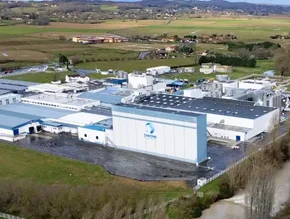New report on global frozen food market is released

International market research company, ResearchandMarkets.com has released its latest research report providing an in-depth analysis of the frozen food market across five major geographies.
The report found that the global frozen food market is expected to reach $408.05 billion by 2029, at a CAGR of 5.2% during the forecast period, 2022-2029.
"The growth of this market is mainly attributed to the increasing demand for convenience food, the growing global cold-chain market, and changing consumer tastes and preferences. Moreover, the increasing digitalisation in the retail industry and emerging economies in Asia-Pacific, Latin America, and the Middle East & Africa provide significant opportunities in this market," a spokesman for ResearchandMarkets.com said.
Report findings by segment
The ready meals segment accounted for the largest share of the frozen food market in 2022. The large share of this segment is mainly attributed to the changes in the lifestyle, increasing workload amongst the corporate and the working-class population, and the growing preference for ready frozen meals owing to the convenience. Also, the rising popularity amongst the younger generation and the adolescent population as it acts as a cheaper alternative to junk food, and it is easily accessible at different convenience stores and supermarkets, which in turn will further boost the growth of the frozen ready meals market.
The bread segment accounted for the largest share of the frozen bakery products market in 2022. The large share of this segment is mainly attributed to the rising bread consumption across the globe, growing preference for fast food, changing lifestyles, and an increasing number of ready-to-eat product chains and QSRs. Increasing consumer preference for healthy products is expected to further support the frozen bread segment's growth.
The raw material segment accounted for the largest share of the frozen food market in 2022. The large share of this segment is mainly attributed to the increased awareness about the nutritional properties of raw frozen food, increasing incidences of obesity and other related diseases, and the growing number of raw labelled food and drink products.
Based on distribution channel, the business-to-business segment accounted for the larger share of the frozen food market in 2022. The large share of this segment is mainly attributed to the growing B2B frozen food trading, a growing number of Quick Service Restaurants (QSRs), and rising demand from hotels, restaurants, food chains, cafes, and the food service sector. However, the business-to-consumer segment is expected to witness significant growth during the forecast period, the report found.






